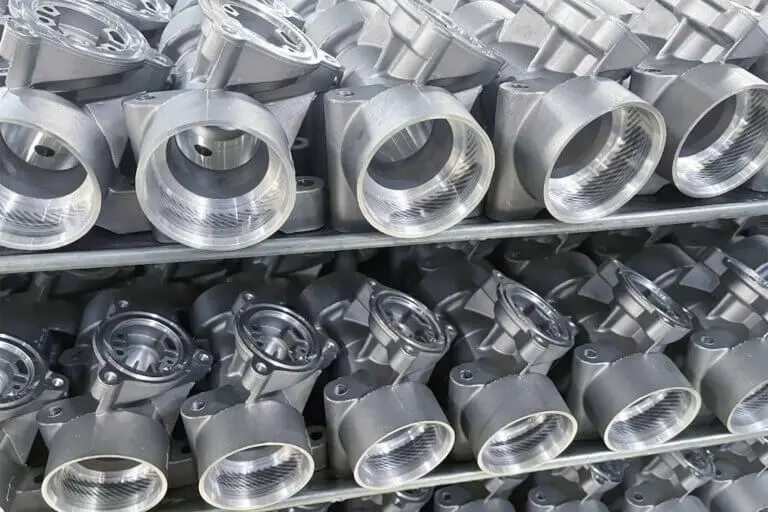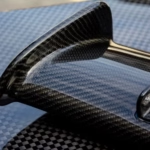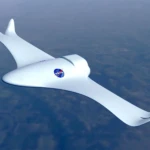Navigation Giant: A comprehensive guide to CNC machining large parts
The world of CNC machining is not limited to complexity and micro. In fact, some of the most complex and critical components of modern industry are measured in feet rather than inches or millimeters. From the vast number of structural elements of aerospace and energy to heavy components for architectural and marine applications, machining most presents a unique set of challenges requiring expertise and equipment. Successfully navigating these challenges offers huge possibilities for innovative and strong manufacturing industries.
Why is large-scale processing your own alliance
To process large parts, you only need to expand a small part of the operation. Complexity comes from inherent factors:
- Material dynamics: Large workpieces, especially metals, have significant internal pressure. Processing releases these pressures, resulting in unpredictable distortion or medium-sized processes. Handling large amounts of aerospace aluminum, marine-grade steel or industrial alloys requires a deep understanding of the material behavior under cutting forces.
- Fixation and stability: Holding the dotton workpiece firmly is crucial but challenging. Custom fixtures must be very rigid to prevent vibration, which can damage the accuracy of the finish and dimensions and withstand huge cutting forces without deflection. Improper fixation is the main source of waste in large-scale processing.
- Thermal management: Cutting will produce significant heat. To a large extent, this heat does not dissipate evenly, resulting in local thermal expansion. If not carefully managed (via tool path policy, coolant policy and monitoring), this may result in inaccurate dimensions, exceeding tolerances.
- Geometric complexity and coverage: Processing features in large structures or extreme angles often require specialized tools with special length to diameter ratios, which are inherently less rigid and prone to deflection. Just accessing all the necessary surfaces can be a major obstacle.
- Large-scale accuracy: Keep tight tolerances (±0.005" At a distance of a few feet or meters, it is more difficult to index at close range than a small portion. Thermal effect, machine deflection, vibration and gravity all play a role in amplification. The requirements for flatness, verticality and parallelism become crucial benchmarks.
- Logistics and processing: Moving multiple tonnes of raw materials and finished parts requires heavy duty overhead cranes, specialized transport vehicles, and carefully planned workflows in the facility. Security protocols are crucial.
- Tool route strategy: Generating efficient, safe and accurate tool paths for large parts requires dedicated CAM software and deep expertise. Strategy must prioritize stability, minimize tool deflection, manage heat and optimize material removal without exceeding the machine or tool.
- Process Measurement: To a large extent, validating size is largely critical, but difficult. Traditional measurement tools may lack scope or accessibility. Portable CMMs, laser trackers and professional scales are often required to be invested in stores.
Overcoming the Giants: Strategy and Technology
Successful hinges in large-scale CNC machining, combining state-of-the-art technology with sophisticated process expertise:
- Power of 5-axis CNC machining: It is arguably the most transformative technology. Five-axis machines not only move tools in x, y, and z; they also tilt and rotate parts (or tool heads). This can:
- Complex geometry in a single setup: Machining complex features from multiple angles without repositioning large parts (save a lot of time and avoiding setup errors).
- Best tool direction: Positioning tools perpendicular to the cutting surface maximizes tool stiffness, reduces deflection, improves surface finishes and enables shorter, stronger tools.
- Accessibility: 3-axis machines cannot access deep cavity or complex contours.
- Reduced fixed complexity: Due to the machine’s ability to reposition parts, fewer complex fixtures are often required. Greatlight’s advanced five-axis capability puts it at the forefront of solving inherent accessibility and setup challenges for large components.
- High stability, high payment machine: Large-scale processing requires machines to be built with extremely high stiffness. Look for CNC mills and lathes with lots of castings, oversized linear guides, powerful spindles with high torque at low rpms (for large diameter tools), and huge working envelopes. Vibration damping technology is crucial.
- Engineering-driven fixed solutions: Customized modular lamps, hydraulic fixtures, vacuum chucks and even custom foundations poured directly under the machine are common. Fixtures are a science involving finite element analysis (FEA) to predict deflection under load and ensure absolute stability.
- Advanced Cam and Simulation: Elaborate CAM software that can handle large amounts of part files and generate optimized conflict-free tool paths is crucial. Simulation is not just a good way; it is crucial to verify the safety of the tool path, check the fixed equipment gap, predict the tool deflection and estimate the machining time. Stress shaping simulations are also crucial.
- Strategic Material Handling: Planning logistics – how parts enter the store, how they are loaded into machines, how fixtures are connected and how they are removed and stored – is a core part of the large manufacturing industry.
- Thermal and process control: Using pass-through spindle coolant (TSC) at high pressures, strategic sequencing of operations to balance heat inputs, and perhaps even environmental controls within the processing zone helps manage thermal distortion. In-process detection and advanced process monitoring systems are critical to early capture of bias. Strict inspection protocols using large capacity CMM or laser scanning ensure final quality.
Why collaborate with expertise
Processing large parts is not a task in general machinery workshops. Investment in infrastructure (large machinery, high capacity cranes, specialized metrology), the depth of engineering expertise required (material science, structural analysis, thermodynamics, advanced CAM programming) and inherent risks (high material costs, long lead times, long lead times) require a professional partner.
Choose Greatlime for most of your CNC machining:
At Greatlight, large CNC machining is the core capability. Supported by advanced five-axis machining centers and supported by deep technical expertise, we face the unique needs of oversized components:
- Advanced five-axis functions: Address complex geometric shapes and accessibility challenges in fewer settings for improved accuracy and efficiency.
- Material mastery: Rich experience in machining a large number of challenging materials, including hardened steel, superalloys, titanium and heavy-duty aluminum through strategies and twisted strategies.
- Engineering stability: From custom, polymer fixtures designed with FEA to our robust machine platform, stability can be designed in every step.
- End-to-end solution: We handle most of the complex machining and provide comprehensive post-machining for a truly one-stop solution (precise grinding, heat treatment coordination, professional coating/paint, assembly).
- Scalability and agility: Ability to quickly set changes and efficient material handling to effectively manage prototypes and production.
Conclusion: Taming the scale with precise techniques
Most of CNC machining represents the intersection of huge scales and microscopic accuracy. It requires a specialized, technology-driven approach where every variable, from material physics to machine stability and thermodynamics, must be carefully controlled. While challenging, the ability to accurately produce these key components enables the industry from aerospace and energy to heavy equipment and infrastructure development. Working with manufacturers like Greatlime, equipped with advanced five-axis technology, strict engineering mindsets, and a strong infrastructure, which are essential for most success, turning the complexity of scale into a reliable advantage. Giants can indeed master them.
FAQ: Most CNC machining
Q1: What exactly is the definition "A large part" In CNC machining?
A: While somewhat relative, large parts usually exceed a few feet per meter in at least one dimension and weigh hundreds or thousands of pounds per kilogram, require specialized heavy equipment to handle and process, and challenges such as managing structural pressure or thermal distortion are often not usually seen in smaller components.
Q2: Why is five-axis machining so important for large parts?
A: Five-axis machining allows the tool to approach the workpiece from any angle in a single setup. This is crucial for large parts because: 1) Repositioning a large number of components multiple times is time consuming and risk loss of accuracy; 2) It allows for optimal tool positioning with strength, thereby reducing deflection of depth features; 3) It can process complex geometry that 3-axis machines cannot effectively reach.
Q3: What materials can be processed for CNC that can be processed for large parts?
A: Almost all processable metals and many plastics can be used. Common large materials include various grades of aluminum (6061, 7075, casting), steel (gent, tool steel, stainless steel-304, 316, 17-4PH), titanium alloys, inconel, Inconel, Inconel, Brass, Bronze and Engineering Plastics such as UHMW or PEEK. Substance selection seriously affects processing strategies. We have extensive experience in these areas.
Question 4: How do you ensure accuracy and accuracy over such a large distance?
A: Achieving accuracy on a large scale requires multiple strategies: highly rigid machinery and custom fixtures to minimize deflection, advanced CAM programming to optimize tool paths and manage pressure/heat, real-time verification in real-time verification, complex metrology (large-capacity CMMS, laser tracker) to gain insight into the material’s in-depth understanding of the material’s process.
Q5: Can a part usually be machined in size?
A: As we invest in technology, our capabilities continue to grow. Please contact you directly for your specific part size and weight requirements. We will evaluate feasibility and provide feedback on the best approach using our advanced five-axis platform and processing system.
Question 6: What are the main cost drivers for machining large parts?
Answer: Key factors include: Material Cost (Large steel bars are expensive), Machine time (slower feed rate and complex setup), fixed (customized, polymer fixation device), Cam programming and engineering time (Requires complex strategies), Reduce danger (Programs to prevent expensive errors), Measuring and inspection, , , , , Processing and logistics. High material and resource strength make it crucial to choose effective expert partners.
Q7: How long does it usually take for most processing time?
A: Delivery time varies greatly depending on complexity, materials, machine availability and required inspections. Simple large-scale features can take several days, while highly complex components can take weeks or even months of machining and related processes. Early consultation is the key to a realistic timeline.
Question 8: Can Greatlight handle finishing and post-processing of large parts?
Answer: Absolute. We provide a comprehensive one-stop post-processing solution. This includes precision grinding, heat treatment (usually coordinated with a professional supplier, depending on size), a variety of finishes (anodized, plating, passivation, paint) and assembly services to ensure most of your time arrives and is ready for its application. Customize your precision parts now!

















